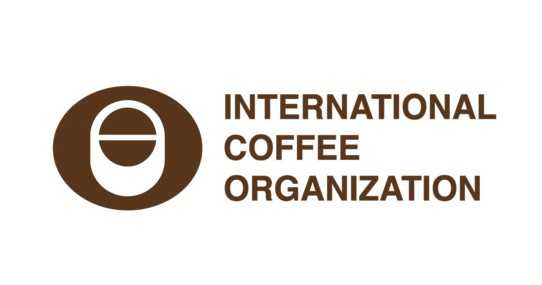Share your coffee stories with us by writing to info@comunicaffe.com.
LONDON, UK – The ICO composite indicator decreased by 5.2% to an average of 99.05 US cents/lb in June 2020, which is the third consecutive month of decrease, says the International Coffee Organization in its latest market report.
Prices for all Arabica groups trended downward in June 2020, but the Robusta group indicator rose by 0.1% to 64.62 US cents/lb. The volatility of the ICO composite indicator decreased by 1.6 percentage points to 6.1% over the past month. World exports reached 10.49 million bags, 14.6% lower than in May 2019, but this is the third largest volume for May on record.
Global shipments in the first eight months of coffee year 2019/20 have fallen by 4.7% to 87.96 million bags. According to recently released data for March 2020, imports by ICO importing Members and the United States increased by 5.1% to 11.76 million bags of which 8.25 million bags originated from exporting countries. In the first half of coffee year 2019/20, imports by ICO importing Members and the United States reached 64.22 million bags, 3.7% lower than in October 2018 to March 2019.
In June 2020, the ICO composite indicator averaged 99.05 US cents/lb, 5.2% lower than in May. This is the first time since October 2019 that the ICO composite indicator has fallen below 100 cents/lb and the third consecutive month of decrease.
The daily price of the ICO composite indicator spent more than half of the month below 100 US cents/lb, ranging between a low of 96.79 US cents/lb on 25 June and 101.27 US cents/lb on 8 June.
Despite strong exports in the first half of the coffee year, the ongoing bearish outlook for demand, as global economic growth was further revised downwards in June by the International Monetary Fund, and expectations for a large harvest in Brazil put downward pressure on prices in June.
All Arabica group indicators trended downwards in June 2020, but prices for Robusta averaged 64.62 US cents/lb, 0.1% higher than in May 2020. Prices for Brazilian Naturals fell by 9% to 92.56 US cents/lb, as harvesting of Brazil’s on-year Arabica crop is well underway with minimal impact so far from covid-19. Additionally, shipments from the second largest exporter of Brazilian Naturals, Ethiopia, have remained strong in the last five months, signalling ample supply. Colombian Milds fell by 5% to 147.16 US cents/lb, and Other Milds by 5.6% to 141.52 US cents/lb. As a result, the differential between Colombian Milds and Other Milds increased by 10.2% to 5.64 US cents/lb.
The New York Arabica futures market fell by 7.5% to an average of 99.50 US cents/lb in June 2020 while the London Robusta futures market rose by 0.2% to 54.77 US cents/lb. As a result, the spread between Arabica and Robusta coffees, as measured on the New York and London futures markets, fell to 44.73 US cents/lb, which is 15.4% lower than in May. Certified Arabica stocks decreased by 5.6% month-on-month to 1.9 million bags in May 2020, which is the fifth consecutive month of decline. Certified Robusta stocks decreased for the fourth consecutive month, reaching 2.02 million bags in June, 7.3% lower than in May.
The volatility of the ICO composite indicator decreased by 1.6 percentage points to 6.1% over the past month. The volatility of all group indicators fell in June 2020. Other Milds decreased by 2.8 percentage points to 5.8%, Colombian Milds by 2 percentage points to 5.6% and Brazilian Naturals by 1.6 percentage points to 8.7%. The Robusta group indicator volatility was 6.6%, a decrease of 0.2 percentage points from May 2020.
Global shipments in May 2020 fell by 14.6% to 10.49 million bags, as exports from all coffee groups decreased. However, this volume is the third highest on record for the month of May and follows unusually high shipments last year. Exports of Arabica decreased by 19.7% to 6.43 million bags. Shipments of Colombian Milds fell by 13.4% to 999,000 bags. This is due largely to a decline of 13.1% to 894,000 bags for exports from Colombia. Compared with May 2019, shipments of Other Milds decreased by 14.4% to 2.61 million as volumes fell for the five largest exporters of this type of coffee, notably Honduras where exports declined by 20.9% to 730,000 bags.
Exports of Brazilian Naturals decreased by 25.7% to 2.82 million bags. Brazil’s green Arabica shipments fell by 27.3% to 2.2 million bags, reflecting the biennial downturn of its 2019/20 crop. However, Ethiopia’s exports rose by 7.8% to 381,000 bags.
Exports in the first eight months of coffee year 2019/20 reached 83.8 million bags, down by 4.7% from the 87.96 million bags registered in the same period in 2018/19. In October 2019 to May 2020, exports of Colombian Milds fell by 7.9% to 9.33 million bags, Other Milds by 7.4% to 16.58 million bags, and Brazilian Naturals by 9.6% to 26.23 million bags. In contrast, shipments of Robusta increased by 2.5% to 31.67 million bags in the first eight months of coffee year 2019/20.
Imports by ICO importing Members and the United States, which on average account for around 75% of global imports, increased by 5.1% to 11.76 million bags in March 2020 of which 8.25 million bags originated from exporting countries.
In the first six months of coffee year 2019/20, imports by ICO importing Members and the United States decreased by 3.7% to 64.22 million bags. Imports by the EU in October 2019 to March 2020 fell by 2.9% to 41.6 million bags, and those of the United States decreased by 8.2% to 13.75 million bags. Imports by Japan declined by 8.3% to 3.6 million bags, Tunisia by 6.2% to 265,000 bags, and Norway by 0.5% to 363,000 bags. In contrast, imports by the Russian Federation grew by 8% to 2.99 million bags, while those of Switzerland increased by 7.8% to 1.65 million bags.
Brazil was the largest source of coffee imports by the European Union, accounting for 20% of its imports in October 2019 to March 2020. This was followed by Viet Nam (13.8%), Colombia (3.9%), Honduras (3.8%) and Uganda (3.2%). Imports from Brazil and Viet Nam decreased by 6.7% to 8.32 million bags and by 10.4% to 5.74 million bags, respectively.
However, imports from Colombia grew by 0.3% to 1.63 million bags, from Honduras by 20.7% to 1.57 million bags and from Uganda by 7.6% to 1.35 million bags.
Around 70% of the EU’s imports are green coffee, particularly for those originating from producing countries, while soluble coffee accounts for around 10% of its imports. In the first half of coffee year 2019/20, Brazil, India, and Viet Nam were significant sources of soluble coffee, representing 5.4%, 4.7% and 3.5% of the EU’s total soluble imports, respectively.
Imports from Brazil and Colombia accounted for 53.6% of imports by the United States in the first six months of coffee year 2019/20. Viet Nam represented 9.1%, Mexico 4.9% and Peru 4.1% of US imports. Imports from Brazil decreased by 2.7% to 4.21 million bags, from Colombia by 10.3% to 3.15 million bags, and from Viet Nam by 18.5% to 1.25 million bags.
Shipments from Mexico amounted to 672,000 bags, 21.5% lower than in October 2018 to March 2019, while shipments from Peru fell by 27.3% to 558,000 bags. The top five largest sources of imports of soluble coffee came from Brazil, Mexico, Colombia, India, and Spain, which accounted for 87.8% of the total. Among the five largest origins for roasted coffee, Canada, Italy, and Switzerland represented 71.8% while Mexico and Colombia represented 10.8% and 7.3%, respectively.
Similarly to the European Union and the United States, Brazil, Viet Nam and Colombia were the main origins for Japan’s imports in the first half of coffee year 2019/20, accounting for 30.7%, 25.1%, and 15.3%, respectively. Ethiopia and Indonesia, representing 7% and 6.2% of Japan’s imports, were the next two largest suppliers. Imports from Brazil fell by 27.2% to 1.1 million bags and from Indonesia by 21.3% to 223,000 bags. However, imports from Viet Nam grew by 12.9% to 904,000 bags, from Colombia by 14.4% to 551,000 bags, and from Ethiopia by 6.8% to 252,000 bags.
Nearly 90% of Japan’s imports consist of green coffee, while soluble coffee accounts for around 9% of total imports. Brazil, Viet Nam, and Colombia accounted for near 75% of total soluble imports. Brazil’s shipments of soluble coffee to Japan rose by 5.4% to 145,000 bags and Colombia by 20.5% to 28,000 bags while Viet Nam’s fell by 14.7% to 68,000 bags.















